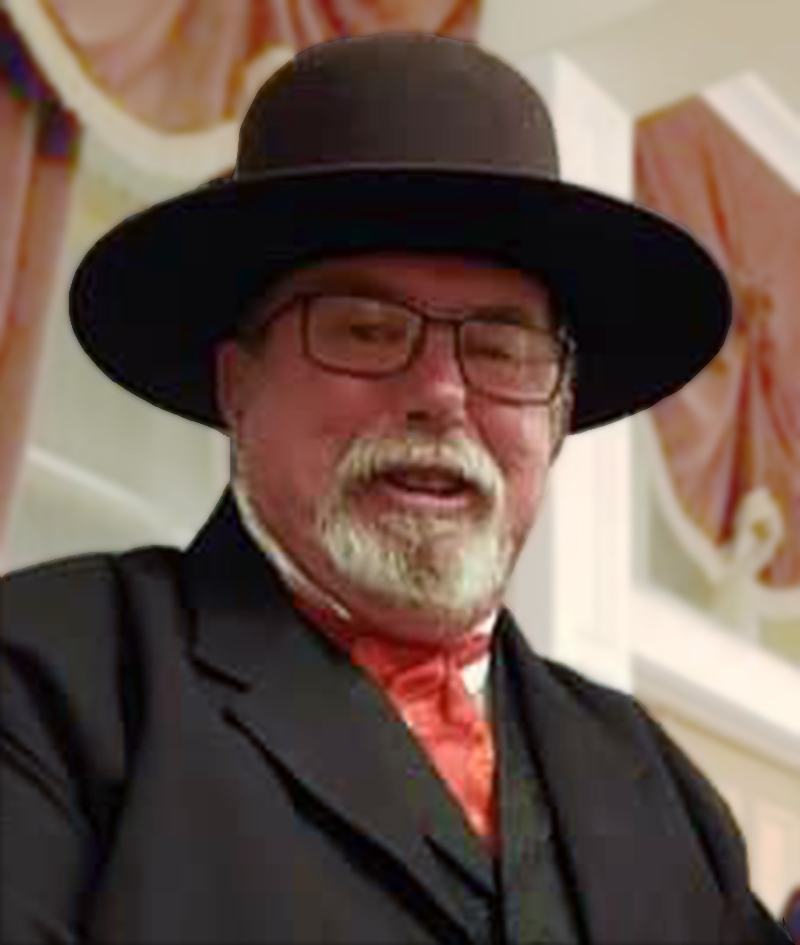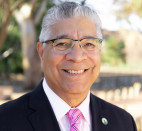 With the recent Sage Fire in Stevenson Ranch and now the Sand Fire, people are seeing how the use of firefighting aircraft can help the ground units get an advantage on a fire.
With the recent Sage Fire in Stevenson Ranch and now the Sand Fire, people are seeing how the use of firefighting aircraft can help the ground units get an advantage on a fire.
Looking at all of the different types of aircraft flying over the fire, we see the ballet they perform, saving lives and property. This whole process has intrigued me since I was a kid.
Airtankers are just one asset in the firefighting arsenal. These aircraft have taken several different paths to become the firefighting tools they are today.
They are not all the same, and they serve different needs, depending on the situation.
We are lucky in Southern California that the state and local government agencies have made major investments in firefighting aircraft. When a brushfire is reported here in the Santa Clarita Valley, the Los Angeles County Fire Department generally sends a helicopter, if not two. L.A. County was the first municipality to operate the S70 Firehawk.
Mutual aid allows local agencies to share equipment in an emergency. It’s normal to see city (of Los Angeles), county, state and federal aircraft working together on fires.
The best types and the usage of these aircraft have been debated for years. Sometimes it’s economic, other times it’s political. I am not starting a new debate, just trying to educate a little. I don’t claim to be an expert, but I have an aviation background and even flew with several pilots of these aircraft. I spent time at a CDF (Cal Fire) Air Attack Base and talked shop with the crews. I find the whole field interesting and wanted to share.

Circa 1978, the writer waxes his car in the shade under a Cal Fire B-17’s wing
at the Porterville (Calif.) air base | Click all images to enlarge.
But first, a brief history lesson.
Most of the aircraft used are ex-military. Many originally came from World War II. They were big and readily available on the surplus market after the war.
I remember as a kid in the ‘60s going to Burbank Airport, which had an air attack base at the south end by Empire Avenue, and watching B-17 and B-25 bombers loading retardant and departing. Along with the A26, C-119s and DC4s (C-54s) have since been retired.
Other aircraft from that era like the Douglas DC6/7, Lockheed P2V Neptune and Grumman S2 Tracker (with new engines) are still in use today.
There is only one “purpose built” firefighting aircraft. Most will recognize the CL-415 SuperScoopers built in Canada. L.A. County leases two every year.
There are basically three types of aircraft over a fire – airtankers (dropping retardant or water), helitack (helicopters) and leadplanes.
Leadplanes are used by the airborne coordinator or Air Boss to help direct the airtankers to their target from the air. They will fly just ahead of the airtanker and use radio communications or smoke to mark the spot to drop. They carry no retardant or water. They are small turboprops or jets that act as the air traffic controllers over the fire.

TFR for the Sand Fire
The FAA also will create temporary flight restrictions (TFR), a zone over the fire. For the Sand Fire, it goes from the ground to 8,500 feet. This keeps the airspace clear for the air attack aircraft. All non-air attack aircraft are restricted from this area – airliners, general aviation, TV helicopters, military and drones included. Some flights to and from Burbank and Van Nuys have been rerouted around the fire.
OK, now my 2 cents. It seems it’s becoming a sad and dangerous trend to have someone fly a drone over a fire and ground the air attack aircraft. Please, for their safety and ours, don’t do it. I would hate to have loss of life and property because of a toy.
I’ll get off of my soapbox and continue…
Today, most airtankers drop PhosChek. It’s a retardant that is mixed with water and red iron oxide to help mark the drop. It was originally developed by Monsanto and now is owned by ICL and made on Ontario, Calif.
Other than the retardant qualities, it acts as a fertilizer to promote growth after the fire. PhosChek replaced borate-based retardants that were bad for the environment.
You don’t generally put PhosChek on a fire; you lay a line of it in front of a fire and create a firebreak. The biggest downside to this is that the airtankers must return to a base to reload. For us in the SCV, they can go to Lancaster, Victorville or Camarillo. Turnaround time is based on how many airtankers you have in the rotation.
Water, which most helicopters and the CL-415s drop, is better to put out hot-spot fires. Although not a retardant, its biggest advantage is that crews can create a helispot near the fire to refill their tanks. Some can use a snorkel and refill from a pond, lake or pool. The SuperScoopers need to use a lake or ocean. Castaic is used often for just this purpose.
There are pre-designated helispots all over the SCV. L.A. County Fire has marked locations where a helicopter can land safely and where there is road access for a fire truck to refill it. Many are near fire hydrants to supply water to the helicopter. They are identified with the closest fire station to it.
Unlike the airtankers, which are on standby with their tanks filled with retardant, most helicopters must fill their tanks at a helispot or base camp when dispatched to a fire.
Generally, if an airtanker does not fly for four days, it will perform a brief maintenance flight. After airtankers take off, they must drop the retardant before they land. They tend to drop alongside the runway, which accounts for all of the wildflowers in the spring.
While there are many more types of firefighting aircraft throughout the world, I will discuss only the aircraft you would likely see in the skies over the SCV – those operated by L.A County, L.A City, Cal Fire, U.S. Forest Service and the independent contractors working for those government agencies.

DC-10
DC-10: There are currently three McDonald-Douglas DC-10s that have been converted as airtankers. This is a new trend, converting commercial aircraft for firefighting rather than ex-military aircraft.
Currently based in Victorville, they must be refilled there during a fire. As modern jet aircraft, they can make the trip rather quickly. They carry 12,000 gallons of retardant, the most of all of these local aircraft (although there is a 747 based in Colorado that can carry 20,000 gallons). The DC-10s operate under a lease with Cal Fire and have worked recent fires in the SCV.

Bae-146
Bae-146: British Aerospace’s Bae 146 is a high-wing airliner with four jet engines. Introduced in the mid-1980s, these planes are still in use today and are some of the youngest aircraft in the airtanker fleet. To date, Neptune Aviation in Montana has modified five of these jets into airtankers. With the ability to carry 3,300 gallons, fly at higher airliner speeds, adroitly maneuver and have a high airframe lifespan, they are a popular choice to replace older piston aircraft.

P2V
P2V: The Lockheed P2V Neptune was a piston radial engine-powered submarine hunter. Introduced in 1947 and retired from U.S. Navy service in 1984, these aircraft can carry nearly 2,100 gallons of retardant and have a cruising speed of just over 200 mph. They are the oldest airtankers in use today and are scheduled to be retired and replaced with newer turbine aircraft.

S2F
S2F: Grumman’s S-2F Tracker is a carrier-based submarine hunter that was introduced in 1954. It is still in use by the Argentinian and Brazilian navies. The airtanker versions used by Cal Fire have had their radial engines replaced with new turboprops by Marsh Aviation. They cruise at 250 mph and carry 1,200 gallons of retardant.
Cal Fire owns 22 of these aircraft. They can fly into canyons and get retardant into areas that the bigger planes just can’t.

CL-145
CL-415: Bombardier’s purpose-built CL-415 SuperScooper is an upgraded version of the manufacturer’s CL-215. CL-415s refill by skimming the surface of a lake or ocean.
The two that we see, radio call “Quebec 1” and “Quebec 2,” are leased from the government of Quebec after the fire season in Canada ends. The CL-415 was introduced in 1994 and costs more than $30 million new. It cruises at 200 mph and carries 1,600 gallons of water.
Based at Van Nuys Airport, there has been some controversy with these planes in California, as many see them as being more for political gain than as a firefighting resource. I will stay out of that debate.

C-130
C-130: The U.S. Forest Service has started integrating the Coulson Aviation Retardant Delivery System using a Lockheed C-130/H model. Unlike the MAFFS (Modular Airborne Fire Fighting System), which sprays out the back ramp of the aircraft (see photo), this new system is an in-floor system with a removable 4,000-gallon tank. The newer MAFFS-2 system improves delivery as it sprays out the side door.

Firehawk
Firehawk: L.A. County Fire currently has three Sikorsky S70 Firehawk helicopters. They can refill their 1,000-gallon tank with water from a helispot set up near the fire, or snorkel from a lake or pool. They are fast, maneuverable and highly effective.
With the use of “night goggles” they are certified to fly at night – one of the only aircraft that does so. The L.A. County helicopter base is at Barton Heliport in Pacoima, but they are staged daily all over the county. For the SCV, it’s Camp 9 above Sand Canyon.

Skycrane
Skycrane: Sikorsky originally made the S-64 beginning in 1962. In 1992, Erickson bought the rights and started manufacturing an updated version, the S-64E. The firefighting version holds 2,650 gallons of water or retardant, the most for a helicopter and more than many firefighting airplanes. It can snorkel from a lake as shallow as 18 inches and refill its tank in 45 seconds. Some have the ability to spray water out of a nozzle straight out the front for use on a building. L.A. County and L.A. City lease several every fire season. Most are based at Van Nuys Airport.

Huey
Huey: L.A. County and L.A. City, as well as Ventura County, fly the Bell 412 Huey. A versatile helicopter for a multitude of jobs, it can be part of helitack as well rescue and air-ambulance.
It carries just 350 gallons of water and must be filled on the ground by a fire crew. Although the smallest in carrying water, it is a highly effective tool for fire departments.

Fire King
Fire King: The Sikorsky S61-A is a heavy-lift helicopter from the early 1960s. Withrotor Aviation in Oregon has modified them and operates them for firefighting.
The S61-A carries 1,000 gallons of water or retardant. It can be refilled an air attack base or by its snorkel. It can fill its tank from a lake or pool in 60 seconds.
This article is far from complete, but hopefully it will answer some questions and inspire you research deeper. These aircraft are flown by talented pilots, and it’s amazing how well they work as a team, risking their lives to protect ours.
Please watch what they do, but at a safe distance. Their job is tough enough without someone getting in the way.
Fly safe.
Michael R. Mazzetti is a member of SCVTV’s board of directors. For a decade, he was a flight-test engineer at Lockheed’s Skunk Works in Burbank.
Like this:
Like Loading...
Related





 Tweet This
Tweet This Facebook
Facebook Digg This
Digg This Bookmark
Bookmark Stumble
Stumble RSS
RSS






















































REAL NAMES ONLY: All posters must use their real individual or business name. This applies equally to Twitter account holders who use a nickname.
15 Comments
Wow!
This is a cool shot!!!
Awesome article!!
Monica CastanedaWanda Negrete-Gastelo awesome plane and awesome fire fighters dropping the red stuff
Firefighters lol
Great Article, THANKS!!
I’m just a couple of miles from one of those airports. They stay quite busy around here also. ???
Michael R. Mazzetti do happen to have any info on the other support planes?? The ones doing command and control (I assume) and the small jet leading the DC-10 in a couple of times, it appeared to be marking with white powder. Great article!!
I have seen Cessna Citations, Turbo Commanders and 0V10 Broncos in use.
DC-10 COMING IN HOT!
I saw one do that yesterday in my hills that were on fire.
Fighting woodland fire involves removing aspects of the fire triangle – Fuel, Heat, Oxygen. Firefighters on the ground make cut fire lines or breaks removing the fuel source of the fire. Engine crews can use water in areas that they can access to reduce heat. Water dropping aviation equipment is for reducing heat. Chemical retardant is dropped and effectively take part in removing all aspects of the fire triangle. The retardants remove the fuel source for the approaching fire, causes cooling in the area that the retardant was dropped, and restricts airflow (oxygen) where the retardant was dropped.
This fire that has hit the SCV is a raging beast and I cannot express how fine of a job all of our ground and air resources have been doing taming this beast! Hats off to all of our (local and outsourced) fire and law enforcement personnel for the selfless and amazing job they are doing! Let’s also not forget our amazing animal shelter personnel and volunteers! Thank you for all you do!
Was a beautiful sight to see all of it! Thank you for saving the homes you could in the Sand Canyon area. God Bless them and their families!
Kirby Baldwin
For you Kirby Baldwin